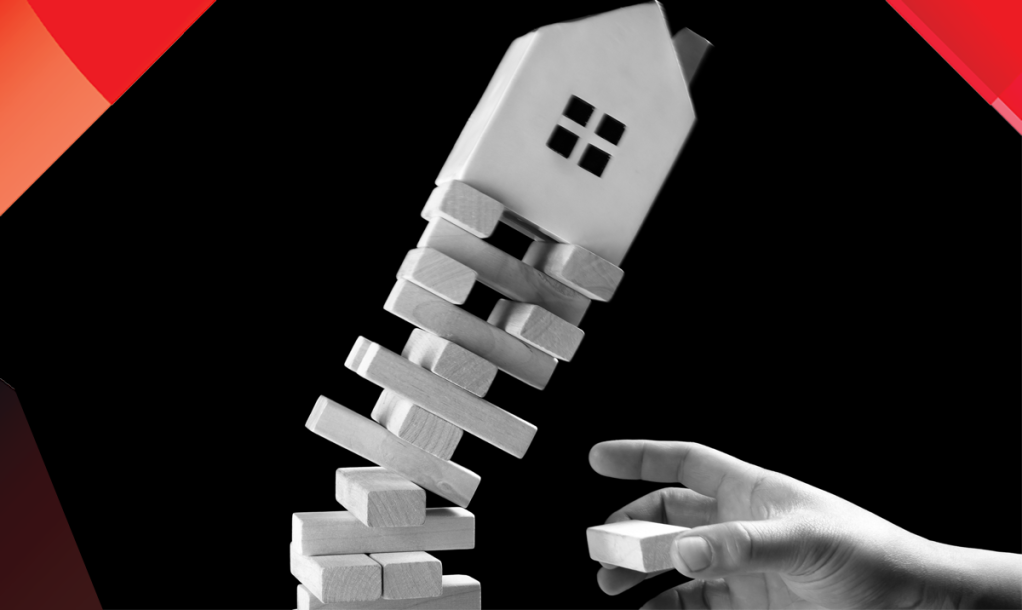We are coming off a tumultuous two years of growth in the U.S. housing market. And now we are facing a tumultuous year of mortgage market normalization. So it’s true to say that turmoil and mortgage outlooks are strange bedfellows, but it’s true. Interest rates are rising, affordability is a challenge, and geopolitical conflicts impact global supply markets.
It’s only natural that market players might be skittish over what direction housing will trend. In the coming months, you’ll read headlines on a housing “bubble” or maybe even a looming “crash,” but cooler heads can still prevail. That’s why knowing the signs and interpreting them can provide invaluable direction for your clients and your business.
What’s critical is that you know what is moving the market. Runaway headlines that predict housing doom shouldn’t be what dictates your business or your client’s next move. After all, the media would be remiss not to be apprehensive in the current market environment.
Behind those negative headlines is the hot housing market that has contributed to some all-time high housing prices across the U.S. Throw in rising rates and you get is ensuing panic. How can high prices be sustained when a buyer’s buying power is stretched so thin?
Recent bias is driving negative housing headlines
First, it helps to understand why press headlines and your clients might quickly interpret today’s housing trends as fatal. Recency bias is a psychological phenomenon where you give more importance to recent events than taking in the bigger picture, and it’s the main culprit as to why so many people are executing a housing crash.
The housing market has only experienced a crash once in 70 years! That’s a fantastic track record that should speak to the resilience of housing.
Here’s the problem, what we all remember is the housing crash of 2008 to 2009. Because of its recency, that event is what resonates with people today. You don’t think that for the majority of the housing industry, housing has stood the test of economic trials. Here’s how recency bias works in housing — because we experienced a crash in the not-so-distant past and it was brutal, that’s what we remember. We can convince ourselves that it will happen again despite history telling us that it likely won’t.
How data can help you interpret trends
Here’s where you, the real estate professional, can set yourself apart from the negative headlines driving uncertainty in the market today. Knowing where we are standing in terms of the housing industry and the trends that will prevent an imminent crash can be determined through data!
Recently, mortgage rates have been a primary driver of the negative headlines that serve to incite panic over an imminent housing crash. The narrative is that mortgage rates are now at a three-year high, housing affordability will go down, people might panic, and people will buy fewer homes. There will be less demand for homes and that would be one of the big reasons there might be a housing crash.
No document has ever correlated rising interest rates with falling house prices.
In reality, mortgage rates have little correlation to home prices. The data shows us that rates have had no impact on prices in the last 40 years. Historical data shows that house prices have continuously gone up irrespective of where interest rates are; that is because mortgage rates are cyclical, they go up and they go down. Surprisingly home prices are not; they continue to rise.
Imminent wave of foreclosures?
Another culprit behind the negative housing headlines is the so-called imminent wave of foreclosures that will come as the number of people in COVID-19 forbearance exits. In 2006, a flood of foreclosures flooding the market did trigger a dramatic drop in home prices. Today the reality is vastly different.
In 2021, the record increase in home prices helped homeowners build equity to roughly $2.1 trillion, the most significant annual increase in equity. Data shows homebuyers since 1954 built equity for decades; those who did not build equity purchased between 2003 and 2007. That means that in the last 70 years, only for four years, people who had purchased a home lost equity, and it took them about six or seven years to recover. Which other asset class has the same kind of history?
Another misconception is that people believe that equity builds only for those without mortgages. That is not true. You can build equity in your home so long as what you owe is worth less than what your asset is worth. History has taught us that for the better part of the U.S. housing market, home prices keep building, and the data shows us that at this time, less than 2% of U.S. households are underwater.
When talking to your customers, two critical data points highlight why a crash isn’t imminent.
A data point that explains the resiliency of the housing market: the number of households forming vs. the number of homes constructed. Data shows that before 2013 fewer households were forming and more construction was happening, so we had a surplus of homes.
Since then, homebuilders have been so terrified that one of these days, demand will go down that they have constantly looked to keep their construction low, which Covid only worsened because of supply chain issues.
In 2021, we had a shortfall of about 5.1 million homes in the U.S. — this is the gap between how much we need and how much we are building. From 2015 to 2021, average household formation was about 1.5 million and 889,000 homes were built. Even if the building pace were to pick up by two times, it would take seven years to close the existing gap.
Start building your business for the future of housing
There’s a seismic shift happening in U.S. housing and it will reshape how we conduct business. There will be 7 million new homeowners in the next decade, a nearly 9% increase from the last decade. That’s great news!
Even more startling is that 100% of new homeownership growth will come from people of color. The number of white homeowners will decline by 1.8 million. One of the most significant demographic shifts that has happened under our nose was that we saw an increase in single, female household formations.
In 1981, 11% of all homebuyers were single females, which was pretty significant. Today, single females make up 19% – that is nearly double-digit growth. The rise has been pretty substantial. And that will continue to grow given that one of the final battlegrounds that have kept single women from forming households has been the wage disparity – what the males earn vs. females. Pew research shows that females now make as much as males in 22 of the biggest metros.
These changes are a significant shift for the housing industry because, historically, when we think about homeownership, the old white male is the image that comes to mind. How do we prepare for that shift?
One straightforward thing is to have a team that looks like the client community. At InstaMortgage, 70% of our people are people of color 50% are female. It gets displayed in the kind of loans we do because over 60% of our loans are to minorities. Making changes is not just good for the community; it’s good for you as a business owner.
The following 20 years will be driven by single, younger females and people of color. This demographic of consumers has grown up in Amazon’s prime days; they expect predictability in the homebuying process. The ability to provide predictability and transparency is a feature that will set you, the mortgage industry and everyone else apart from the rest.
Shashank Shekhar is founder and CEO of InstaMortgage.
This column does not necessarily reflect the opinion of HousingWire’s editorial department and its owners.
To contact the author of this story:
Shashank Shekhar at at Shashank@instamortgage.com
To contact the editor responsible for this story:
Sarah Wheeler at sarah@hwmedia.com






